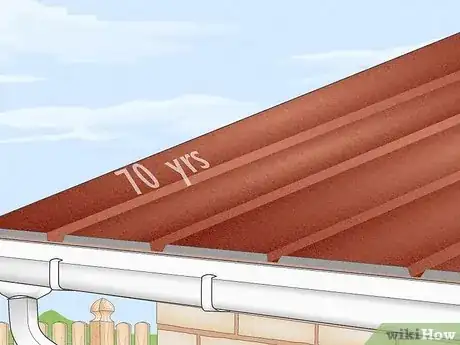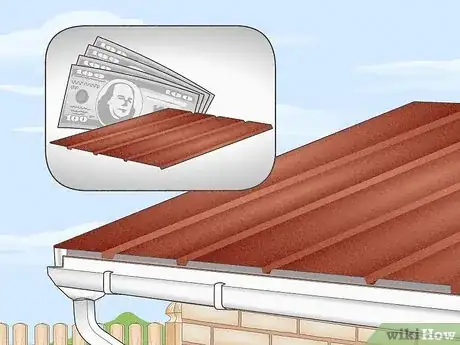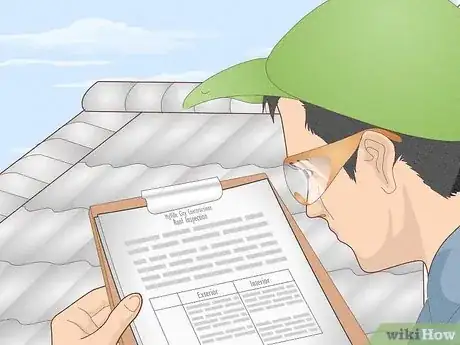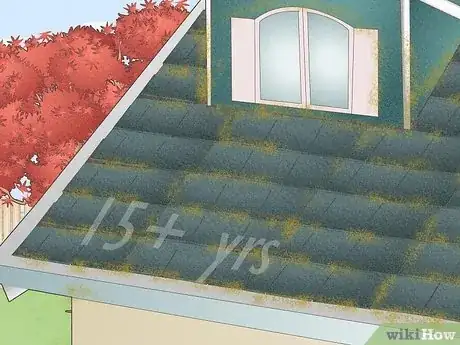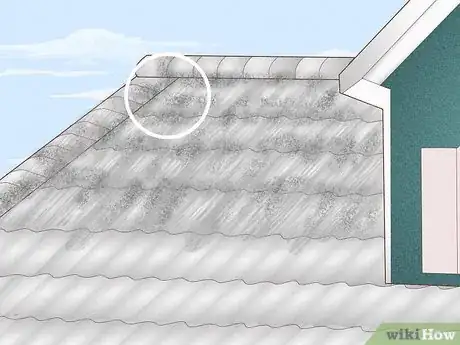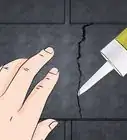This article was written by David Bitan and by wikiHow staff writer, Jennifer Mueller, JD. David Bitan is a roofing professional, licensed contractor, and the owner and founder of Bumble Roofing based in Southern California. With over 12 years of construction industry experience, David specializes in restoring, repairing, and maintaining residential, commercial, and industrial roofs. With over 60 years of combined experience, Bumble Roofing provides easy, friendly services to structures including residential, commercial, industrial, multi-family, and government buildings along with hospitals, hotels, and churches.
Unless you live in an area with frequent severe weather threats, you probably don't think about your roof too much—and you don't really need to, either. Most roofs will last at least 20 years and don't require a lot of maintenance. But there are a few things you can do to prolong the life of your roof and avoid leaks and water damage to your home. Read on to learn how to care for your roof so it will continue to protect your home for years to come.
This article is based on an interview with our roofing professional and licensed contractor, David Bitan, owner and founder of Bumble Roofing. Check out the full interview here.
Things You Should Know
- Expect your roof to last around 20 years with proper maintenance under normal circumstances.
- Remove debris seasonally and check for damage that can be quickly repaired.
- Replace your roof if you have multiple leaks or extensive water damage.
- Plan ahead to replace your roof when it's about 15 years old so you have time to choose the roof you want and budget for the expense.
Steps
Roof Lifespan
-
1Asphalt shingles The more common 3-tab asphalt shingles, used to roof most homes, will last around 20 years. Architectural shingles, considered a bit of an upgrade over the 3-tab variety, typically last around 30 years.[1] X Research source
-
2Wood shingles A bit pricier than asphalt shingles, wood shingles also last a little longer, with an average lifespan of 25 years. Homeowners are typically drawn to these shingles for their aesthetic value, but they're also pretty durable.[2] X Research sourceAdvertisement
-
3Metal Your average metal roof lasts around 70 years, won't rust, and can withstand winds up to 140 miles (230 km) per hour. It also reflects solar heat, which can save you money on your air conditioning bill.[3] X Research source
-
4Concrete or clay tiles This distinctive roof carries a pretty hefty price tag compared to other roof types but will last over 100 years with proper maintenance. Homeowners also appreciate the many different colors and styles of these tiles and how easy these roofs are to repair.[4] X Research source
-
5Slate tiles Depending on the density of your tiles, this roof can last anywhere from 60 to 150 years. Like concrete and clay tiles, slate tiles are quite a bit more expensive than other roofing materials, but they'll pay you back in durability and longevity.[5] X Research source
Factors that Affect Your Roof's Lifespan
-
1Type and quality of materials used Different roofing materials have different life expectancies, but within each type, the quality is also important. Generally, more expensive roofing materials will last longer.[6] X Research source
- When you're installing a new roof, the length of the warranty offered by the manufacturer gives you some indication of how long that roof is expected to last.
-
2Workmanship of installation Hiring a professional with experience in the type of roof you have and the type of roofing materials you're using can make all the difference. The better the installation, the longer your roof will last. Roofing is definitely not a DIY project!
- Proper installation of any substrate, underlayment, or flashing also affects the service life of a roof, especially with asphalt shingle roofs.[7] X Research source
-
3Local climate and weather conditions Severe weather can damage your roof and cut short its life expectancy. Even if your roof isn't destroyed by a catastrophic event, such as a hurricane or a tornado, high winds and heavy rains can wear down a roof and cause it to fail prematurely.[8] X Research source
- If your home sits at a higher elevation, your roof gets more exposure to UV radiation, which can also decrease your roof's overall service life. Lighter-colored roofs help because they absorb less solar light and heat.
-
4Ventilation Roofing materials expand and contract with changing temperatures, so if you live in an area with more volatile daily temperatures, your roof probably won't last as long. Adequate attic ventilation helps decrease the temperature of your roof to reduce overall expansion and contraction.[9] X Research source
- If you live in a hot area, a light-colored roof will last longer than a dark-colored roof because it won't get as hot.
-
5The slope of your roof Flatter roofs tend to have shorter lifespans than roofs that are more sloped. A sloped roof allows rain and snow to slide down before they can penetrate the surface of the roof and cause any damage.[10] X Research source
- Any angled areas that allow water or debris to pool up can also cause roof damage that ultimately shortens the overall lifespan of your roof.
-
6Regular roof maintenance Roofs don't actually need a whole lot of maintenance once they're installed. The main thing is to keep debris off of them and keep your gutters clean so they can drain properly.[11] X Research source
- Check regularly for damage (especially after big storms) so you can fix small problems before they get bigger.
Maintaining Your Roof
-
1Clean out your gutters every couple of months. Cleaning your gutters is probably the most important thing you can do to extend the life of your roof. Clogged gutters cause more damage because water will pool on your roof and start penetrating the top layer of roofing.
- If going up on the roof yourself is difficult, you can hire professionals to do it or install gutter guards that will block debris from your gutters so they don't get clogged.
- If you had a lot of debris on your roof, you'll likely want to clean the shingles as well.
-
2Check your roof for damage seasonally. Different seasons bring different potential threats to your roof. If you can check for seasonal issues at least once every 3 or 4 months, you'll be able to remedy problems before they grow into something more devastating.[12] X Research source
- Spring: growing tree branches scraping the roof; storm damage
- Summer: warping and other heat damage; water damage; insect infestation
- Winter: debris; water damage from snow accumulation
- Fall: leaves and other debris; possible wind damage
-
3Get a professional roof inspection once a year. A licensed roof inspector can identify potential issues that you might overlook and help you develop a care plan that will ensure your roof lasts as long as possible. They can also recommend preventive measures that will help you avoid leaks and other extensive damage.[13] X Research source
- A professional roof inspection also gives you peace of mind knowing that your roof is in good shape and you're doing everything you can to keep it in top condition.
Signs You Need a New Roof
-
1Your roof is more than 15 years old. Most roofs will last at least 20 years, but start thinking about replacement around the 15-year mark. This gives you time to evaluate materials and get several estimates on installation.
- You'll save money when you have time to shop for materials and schedule your replacement. Many contractors charge a premium for last-minute appointments.
- This is especially important if you're thinking about selling your house within the next 5 years. You'll likely need to replace an older roof before you put your house on the market, so you might as well do it now and get some benefit from your investment.
-
2Your roof is damaged by severe weather. If your roof was damaged by severe weather, your homeowner's insurance typically covers the cost of replacement. Some policies have different deductibles for wind or storm damage, though, so you might end up paying more out of pocket than you originally thought.[14] X Research source
- Talk to your insurance agent to file your claim as soon as you can after the storm rolls through and things have settled down. The sooner you get an inspection and a claim filed, the sooner you can get your roof replaced.
- Your insurance company won't replace your roof just because it's old. Even if a storm rolled through your area, the inspector will have to determine that the damage to your roof was caused directly by that storm.
-
3You have leaks or water damage. Leaks are perhaps the biggest sign that you need to replace your roof, but they're hard to find—especially if you live in an area that doesn't see frequent rain. Look for water damage in your attic, especially along the ridge line and the ends of the roof.
- A small leak can usually be patched, and won't typically mean that you need to replace your whole roof right away. But once you've patched it, start planning to replace it within the next couple of years.
-
4You see dark or dirty areas on your roof. Dark splotches on your roof could be evidence of mold or mildew, which is an indication that water isn't draining off of your roof properly. Larger areas typically mean your roof has significant water damage and needs to be replaced.[15] X Research source
- If you see this kind of damage, have a professional come out and look at your roof immediately. It might be the kind of thing that can be patched if someone gets to it quickly before the damage spreads further.
-
5You've had to repair several sections. Even a professional repair typically isn't expected to last more than a year or two. If you've had to have several repairs, or even had a whole section of your roof replaced, it's probably time to start looking at replacing the whole thing.
How Do You Locate Roof Damage?
Warnings
- Patching a roof or installing a new roof is definitely not a DIY project—leave it to the pros to ensure your home is fully protected and your roof will last as long as possible.⧼thumbs_response⧽
You Might Also Like
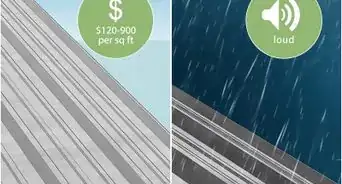


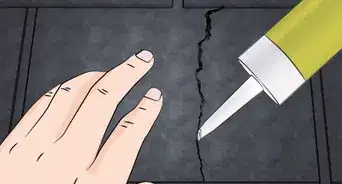

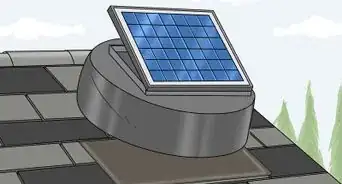
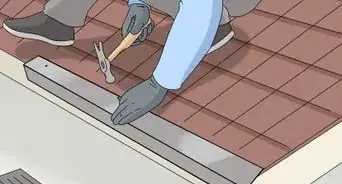
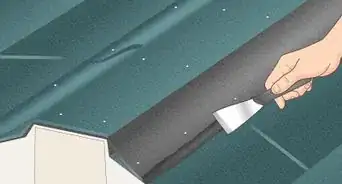

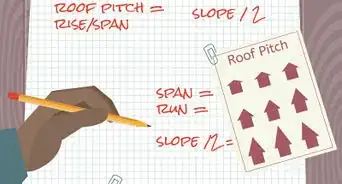
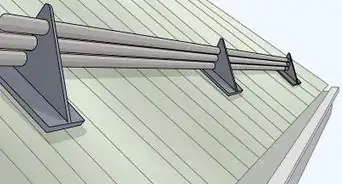
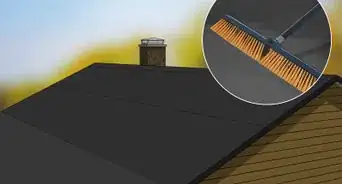
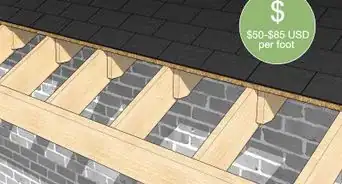

References
- ↑ https://www.nachi.org/life-expectancy.htm
- ↑ https://www.nachi.org/life-expectancy.htm
- ↑ https://www.contractors.net/blog/p.220913074/top-roofing-materials-for-severe-weather-conditions/
- ↑ https://www.nachi.org/life-expectancy.htm
- ↑ https://www.nachi.org/life-expectancy.htm
- ↑ https://www.nachi.org/documents/InterNACHI-School/Asphalt-Student-Book-InterNACHI.pdf
- ↑ https://www.nachi.org/documents/InterNACHI-School/Asphalt-Student-Book-InterNACHI.pdf
- ↑ https://www.nachi.org/documents/InterNACHI-School/Asphalt-Student-Book-InterNACHI.pdf
- ↑ https://www.nachi.org/documents/InterNACHI-School/Asphalt-Student-Book-InterNACHI.pdf
- ↑ https://www.nachi.org/documents/InterNACHI-School/Asphalt-Student-Book-InterNACHI.pdf
- ↑ https://disastersafety.org/maintenance/extend-the-life-of-your-roof-through-routine-maintenance/
- ↑ https://www.nachi.org/documents/InterNACHI-School/Asphalt-Student-Book-InterNACHI.pdf
- ↑ https://www.nrcia.org/why-homeowners-need-annual-roof-inspections/
- ↑ https://www.tdi.texas.gov/tips/replacing-your-roof.html
- ↑ https://www.nachi.org/documents/InterNACHI-School/Asphalt-Student-Book-InterNACHI.pdf
About This Article



